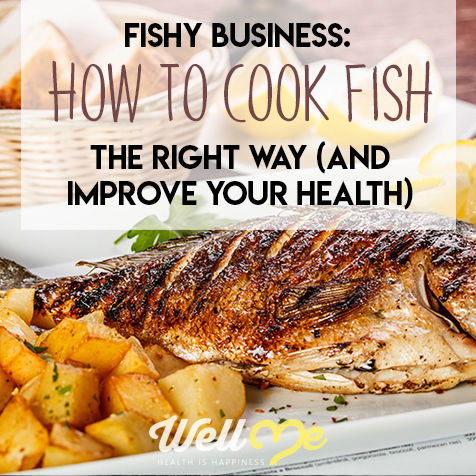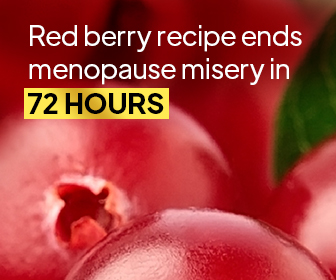Slow your roll, Gordon Ramsay. You think you’ve got what it takes to cook fish?
A lot of people think of cooking fish as a distant, unattainable goal because they’ve screwed up more than a few fillets in the past. If you have experienced bad-fish-trauma, it may be time for you to overcome your culinary fears and take on this tasty meal once more.
That doesn’t mean flying into the fish market gung ho, slapping that thing into the pan, and assuming your fish will turn out perfect this time around, just because of your new and improved attitude.
Instead, take a few minutes to learn the best ways to go about cooking fish and approach the task with your new wisdom in hand. It won’t take long before you go from floundering around to leaping like a salmon.
Why is Cooking Fish so Hard?
There is a common misconception that cooking fish is difficult. Sure, it isn’t Easy Mac, but the problem isn’t really that cooking fish is difficult. The problem is that too many people just don’t know how to do it properly. Think about it – if you didn’t know how to do math, you could never figure out 2 plus 2 no matter how many times you tried. But once you learn the basic idea, suddenly it’s a piece of cake.
That’s going to be your experience with cooking fish.
There are many different kinds of fish out there, and then there are all of the ways you can prepare them. It all adds up to a lot of variables, so it is important to know what you are going for when you show up to the supermarket. A good strategy is to have your recipe picked out ahead of time, or else you might end up fishing around in the dark.
Aim to get yourself a decent quality fish and cook it the same day you buy it. If you are planning to cook it in a day or two, make sure you know how to store it without letting it get wet. You’ll want to keep it colder than the typical fridge but you won’t want to freeze it. To achieve this result, you may find yourself building a wonky contraption that involves placing it above a bowl of ice, but not in the ice. If the MacGyver stuff isn’t up your alley, just cook it the day you buy it. Boom, problem solved.
But buying the fish isn’t really the hard part, is it? What you are really looking for are some tips to make sure that you get it right when it is time to cook. Well, look no further.
Tips for Cooking Fish
Now it’s time for the scary stuff you’ve been dreading since you got home with your beautiful cut of fish: cooking it.
Don’t worry! It’s not hard once you know how.
First things first, you will want to heat up your pan. Medium-high is the way to go most of the time, but consult your recipe. You can cook fish with other methods, but it is best to start out with a heavy pan. That way, you can keep an eye on things and feel like you are in control.
In order for the fish to cook evenly, you’ll want your cut to be of an even thickness. The problem is that a lot of fish have thinned out tail ends. You can avoid a bizarre, mismatched cooking fiasco by simply folding the small end under, creating an even thickness.
The number-one problem people run into when preparing fish is overcooking. Fish cooks faster than other meats, which means it can be easy to let it sit in the pan for a moment too long. However, there are a few ways that you can make sure you’ve got it right on the money.
There is a rule of thumb that says you should cook a fish for ten minutes per inch of thickness. What they don’t tell you is that the better number is eight. You’re always better off realizing you need to keep cooking than realizing that you should have stopped cooking two minutes ago, so shoot for eight minutes per inch.
The niftiest trick for telling if your fish is finished is to stick a butter knife into the thickest portion. If the knife is cold when you take it out, keep cooking. If it is hot, you’ve cooked for two long. If the knife is nice and warm, get that fish on a plate – pronto.
Another helpful tip is to lightly prod the bottom of the fish with a spatula. When it is ready to flip, it will be easy to do so. If you have to dig in to get under, it is probably best to leave it for a little bit longer.
If you are looking for a type of fish that is the easiest to cook, try a tuna steak. They are at their best when undercooked (just think of all the great sushi out there), so it is very easy to avoid overcooking. You may not get the same amount of satisfaction as you may get from a choice that would require more precision, but it is almost a guarantee that you will get a good result.
Hopefully this all sounds relatively easy, but it is worth asking: why cook fish in the first place when you could just make some chicken and save yourself the risk of embarrassment?
The Benefits of Eating Fish
Of all the meats out there, understand that fish is one of the best in terms of health benefits. There are many kinds of fish out there, but they are all beneficial to your health. They include high-quality protein, iodine, and plentiful vitamins and minerals. Best of all, they make fat a good thing!
We like to treat fat like it is the biggest villain in the food world, but you probably know that there is good fat out there. Most of it is hiding in fish. Fatty fish like salmon, trout, and tuna are high in fat-based nutrients like vitamin D, which is notoriously absent in many people’s diets. Fatty fish also contain plenty of omega-3 fatty acids, which manage to help both your brain and your body.
Who says you can’t have it all? Certainly not omega-3 fatty acids.
Fish are also considered a fantastic boost to your heart health. As much as you might like a big rare steak, mixing some cod into your routine could help you stave off heart problems later on. If you even eat fish once per week, you can lower your risk of heart disease.
Most importantly, fish is good for the mind. It can reduce the progression of cognitive decline while helping to treat depression and other mood disorders. You can thank omega-3 fatty acids for that one. It can also help to prevent sleep disorders and is beneficial to healthy childhood development.

Cooking fish may seem hard at first, but it’s a walk in the park once you know what you are doing. There are so many kinds of fish out there that you are pretty much guaranteed to be able to find something you like, and they are all good for you. Like, really good for you. It may be intimidating now, but it’s time for you to head over to the fish counter and show those scaly fellas who’s boss!








